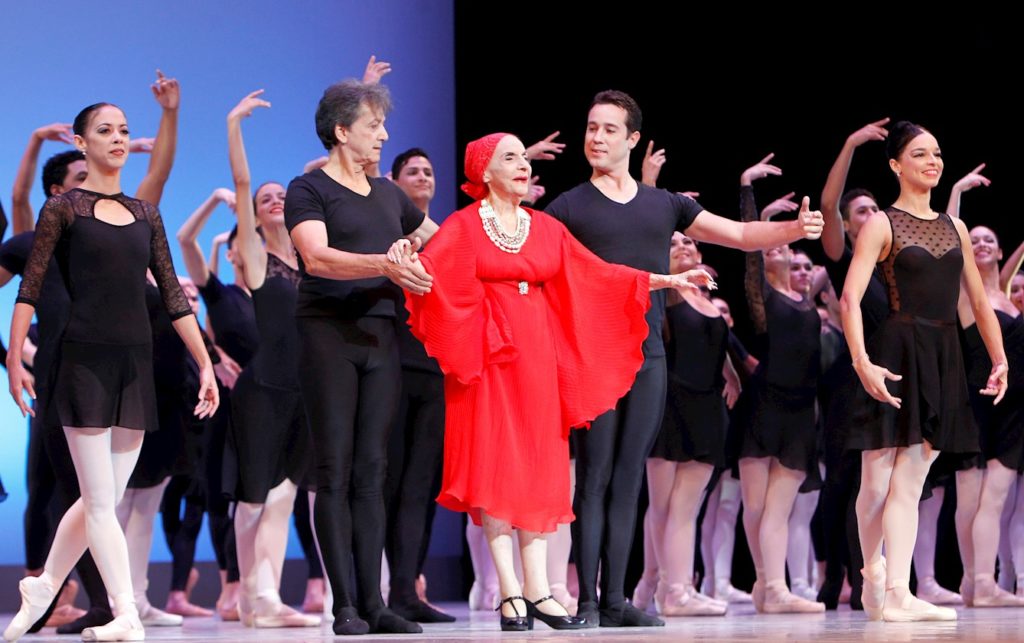Alicia Alonso and the Cultural Cold War

The Cuban ballerina went on to conquer Moscow after taking the spotlight in Paris and New York.
By Rafael Rojas (Confidencial)
HAVANA TIMES – Most interpretations of Cuban reality in the past sixty years, have moved from locating the island within the Soviet Union’s orbit, to another in the Latin American and Caribbean region, which the country only “left” during the Cold War. After the Berlin Wall fell, Cuba’s official discourse forgot how it had formed part of the Soviet Bloc for a long time, as fast as it rejected everything of the US in the early ‘60s.
Recently passing away in Havana, classical ballerina Alicia Alonso and her art are a good example of the fact there had always been an aspiration in Cuban culture to conquer the West, which needed to be adapted during the Cold War to “real Socialism”, and resulted quite troublesome. Two Cuban writers, Alejo Carpentier and Jose Lezama Lina, who also shared the same eagerness for references in Western culture, understood the perfection of Alonso’s art.
“But after triumphing in Paris and New York (Alicia was the star of the Paris Opera Balleet and the founder and prima ballerina of the American Ballet Theater, since the ‘40s), she also conquered Moscow. The Cuban artist traveled to the USSR in 1957 and danced at the Bolshoi in Moscow and the Kirov in Leningrad, two years before the Cuban Revolution triumphed.”
According to Alejo Carpentier, who wrote a story about Cuban music from an avant-garde point of view in 1946, which was published in the Economic Culture Fund, Alicia Alonso’s name was etched into the transformation of Western dance. According to Lezama, around the same time, the ballerina was responsible for discovering a tradition which “we didn’t have”, of ballet.” A tradition where “dance is culture, a practise of grace and numbers to capture passion and the moment,” which Lezama, as well as Alfonso Reyes, situated in Greece and not in Louis XIV’s France of courtiers.
Lezama believed, as did Carpentier, that Alicia Alonso’s art of dance had to do with modern-day France in the 20th century: “when she dances in Paris, she reminds us of one of the greatest eras in ballet, and we dream about Proust, Matisse or Braque watching her on stage.” Lezama concluded: “if Alicia Alonso ever decided to tell the story of her gestures, her movements, what a great Proustian novel we would have.” Lezama wrote this not in the ‘40s when Cuba was still a republic, but in the Soviet ‘70s, when the ideal of a Proustian novel was a declaration of bourgeois beliefs.
However, after triumphing in Paris and New York (Alicia was the star of the Paris Opera Ballet and the founder and prima ballerina of the American Ballet Theater, since the ‘40s), she also conquered Moscow. The Cuban artist traveled to the USSR in 1957 and danced at the Bolshoi in Moscow and the Kirov in Leningrad, two years before the Cuban Revolution triumphed. Her experience at Russian ballet productions in Montecarlo and her collaborations with choreographers such as Mijail Fokine and dancers such as Igor Youskevitch, since the ‘50s, prepared her for her grand move to the Soviet ballet scene in the ‘60s.
“While they [Fokine and Youskevitch] left for the West, Alonso joined Cuba’s ballet school with Soviet socialist culture. That transition was organic in that there was a more complimentary relationship between the West and the USSR in classical ballet, as well as astronautics, where there were less contradictions during the Cold War.
To a large extent, Alonso made the opposite journey of Rudolf Nuréyev, Mijaíl Baryshnikov and other dissidents of that ballet. While they deserted and left for the West, Alonso joined Cuba’s ballet school with “real socialist” culture. That transition was organic in that there was a more complimentary relationship between the West and the USSR in classical ballet, as well as astronautics, than contradictions during the Cold War. Those years saw Alonso’s rich repertoire with her partner Azari Plisetsky, as well as her rivalry with Soviet prima ballerina and Azari’s sister, Maya Plisetskaya.
Like painter Wilfredo Lam or writer Alejo Carpentier (not poet Lezama Lima because he never gained the same international acclaim), Alicia Alonso perfectly illustrates the ambivalence of the cultural Cold War. These three Cuban artists were widely recognized in the West, before the Revolution in 1959, which affirmed their art in the so-called “free world”, with help from the Socialist State.






Que buena nota la de Rafael Rojas, no es nada extraño en él.